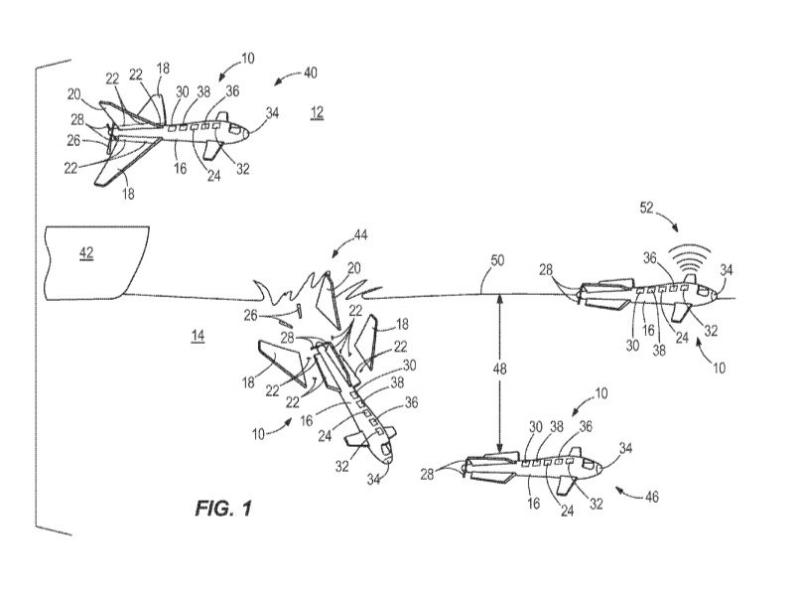(YouTube / PatentYogi)
Early this year, the United States Patent and Trademark Office approved a patent application from Boeing's Nathan Hiller for a "rapid deployment air and water vehicle."
In other words, Boeing's has patented a remotely operated flying drone that can transform into a submarine.
Here's how it works
According to Boeing, the patented craft could be carried into the deployment area by a host aircraft. The remotely piloted drone would then detach from the carrier aircraft and fly on its own. When required, the drone would then dive into the water.
To reduce weight and to optimize the drone's hydrodynamic properties, the craft would then shed its wings and propellers using explosive bolts and water soluble glue.
When submerged, a set of water-borne propellers and control surfaces would appear in place of the detached wings and airborne propellers.

(YouTube / PatentYogi)
Boeing claims that both air and water propulsion will be courtesy of a single — but unspecified — engine.
While underwater, the drone could deploy its payload of supplies or weapons. In addition, the drone could be used for undersea reconnaissance. In submersible mode, the drone controls its depth using onboard ballast tanks.
When the underwater mission is complete, the drone would then surface and communicate the data it collected to other drones or a command center.
In the patent, here's how Boeing describes the craft:
A vehicle adaptable for both flight and water travel comprising: a body configured to fly through air and to move through water; a wing or a stabilizer attached to the body while in flight; a first set of propelling blades attached to the body while in flight, the first set of propelling blades configured to propel the body through air while the body is in flight; a second set of propelling blades, coaxial with the first set of propelling blades, the second set of propelling blades attached to the body when the body is in flight and when the body is in the water, the second set of propelling blades configured to propel the body through water while the body is in the water; and at least one attachment member attaching the first set of propelling blades to the body while the body is in flight, wherein the at least one attachment member detaches the first set of propelling blades from the body when the body is in the water.
As with most patents, the drone featured in the documents is still just an idea and not even to the concept stage. But should Boeing manage to get the flying submersible drone into production, whom ever decides to buy it would certainly have a cool bit of kit on their hands.
(Benjamin Zhang - Business Insider)

No comments:
Post a Comment